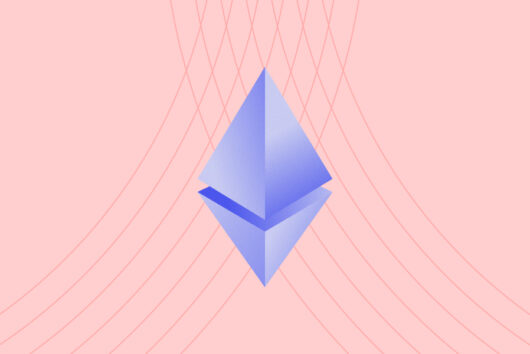Art reimagined: Exploring the rise of Bored Ape Yacht Club

When we think of traditional status symbols, luxury watches, sports cars or yachts might come to mind, but as time moves forward, trends change and what was once considered the ultimate symbol of wealth and status continues to evolve.
According to Jonah Berger, a professor at the Wharton School of the University of Pennsylvania, if enough outsiders adopt a trend, action, or brand, they can change the meaning of its signal.
For one group of friends, they did just that. They changed the meaning of digital art from a standard image you could just copy from a simple Google search into a status symbol and exclusive club that could be seen by millions of people on social media. They went on to capture the imagination and attention of celebrities and the public at large.
They named this collective the Bored Ape Yacht Club (BAYC), which has since cemented its reputation as one of the best-known and most successful collections of NFTs – digital goods such as illustrations, profile pictures sports and entertainment collectables and more – and has generated more than $2.2 billion in revenue.
But what is so special about this collection, and why has it risen head and shoulders above the competition in such a crowded space?
What is an NFT and how is a collection created?
An NFT or non-fungible token is a one-of-a-kind digital asset, meaning that it can’t be replicated or changed once created and serves as proof of ownership for an item.
Broadly speaking, there are two types of NFT art. First, you have one-off visuals that are sold as NFTs, just like paintings in real life. Then, you have NFT collections like the Bored Ape Yacht Club. NFT collections are similar to trading cards like Pokemon. You have a set amount – usually between 5,000 and 10,000 – which all have the same template, but each has different attributes that make them unique.
In the case of BAYC, there are 10,000 apes, each with varying fur types, facial expressions, clothing, accessories and more. The rarer the traits of a Bored Ape, the more expensive it’s likely to be. Once they are created, they are then displayed on OpenSea, the most popular platform where NFTs are traded.
In 2021, the NFT market saw skyrocketing demand, generating $25 billion worth of trading volume according to data from DappRadar. This demand continues today with nearly $16 billion worth of organic trading taking place during the first half of this year.
From bathroom walls to exclusive members’ clubs
But before the idea for BAYC was born, four friends began brainstorming and discovered that their ideas for art were better suited for display on a bathroom wall than on a traditional canvas. Expanding on that idea, they swapped out bathroom walls for a bar, and not just any bar – an exclusive one that was only accessible to its members. And with that, the idea of a yacht club was born.
But what about the apes? Well, expanding the idea of an exclusive member’s only club, the group decided that this would be inhabited by apes of the future, specifically those that had adopted cryptocurrencies and NFTs. However, over time the apes found themselves bored, spending all their time sitting around a bar with friends. Now the theme – Bored Ape Yacht Club was established.
Written up by the team, the backstory was laid out as follows: “The year is 2031. BTC and ETH have taken over the world. Everyone who aped into crypto is rich beyond their wildest dreams. But now they are all bored and want to hang out with other like-minded apes. To do that, you need to go somewhere special.”
With the idea nailed down, the four contributors set up Yuga Labs, the official company behind the collection. The founders and contributors behind the company all went by pseudonyms. Gordon Goner and Gargamel, are the two co-founders, who created the collection with the help of two friends who contributed on the development side: No Sass and Emperor Tomato Ketchup. So, now with the hard work out of the way, what happened next?
Influencers, potential and community appeal
On April 29, 2021, Yuga Labs officially launched the Bored Ape Yacht club NFT collection priced at .08 ETH per ape (about $190 at the time).
Like most successful projects, the success took a while to catch up, with the original set of 10,000 only selling 650 in the pre-launch drop. It was only during the official launch that well-known influencers in the NFT space began to take notice such as the anonymous NFT collector “Pranksy”.
But once that switch was flipped, the response was unprecedented, with the entire collection selling out in just 12 hours. With the added appeal of the different levels of rarity in the individual apes, the price of Bored Ape NFTs steadily rose, gaining favour beyond NFT enthusiasts to include celebrities like Snoop Dogg, Jimmy Fallon and Madonna. This notoriety triggered Yuga Labs to launch a $450 million funding round in March of 2021 at a $4 billion valuation.
With such financial success coming from a seemingly random idea consisting of assets that don’t exist in the physical world, you would be forgiven for scratching your head wondering what makes an NFT collection successful. The boring answer is that it’s highly subjective, just like art valuations today.
But analysing the success of BAYC, you can start to isolate a few themes that helped the company’s collection thrive: Influencer involvement, mainstream potential and exclusivity for its members.
The Bored Ape Yacht club was marketed as a very exclusive club, complete with a number of member-only benefits, such as access to private chat groups, or in-person meets where members could hang out at yacht parties in the US. Coupled with the constant celebrity endorsement and you have a very enticing proposition for a potential buyer.
Status and a sense of belonging can be powerful motivators to many, and the value then comes from this perception of wealth and exclusivity, rather than the actual usefulness of the product in day-to-day living. Just like a businessman will try to signal success or business acumen by sporting the latest Rolex as he steps out of a brand new sports car, many people now proudly display their Bored Ape NFT as their avatar on social media.
And the story is far from over for Yuga Labs, as the group has since launched a number of projects for its Bored Ape Yacht Club brand in both the digital and real world.
Coins, metaverses and fashion
Not content with just NFTs, Yuga Labs released their own cryptocurrency: Ape Coin in March this year, with all Bored Ape Holders given over 10,000 of the coins at launch – worth a staggering $100,000 at the time, with the value continuing to grow since. This coin will also be used as the main currency in Otherwise, a metaverse (big virtual spaces shared by thousands of people at a time) Yuga Labs has built.
Meanwhile, out in the physical world, Yuga Labs is working with Coinbase on a trilogy of films, with the first debuting at NFT.NYC in June, coinciding with the launch of Coinbase’s NFT marketplace. In the fashion space, Bored Apes are integrating themselves into clothing, with Adidas and BAYC on the way.
One aspect of the BAYC that has begun generating some interest projects in the holder communities is that owning one entitles the holder to full commercial rights. For example, one Bored Ape owner set up a Twitter account for his ape, creating a full backstory for the character. The avatar was given the name ‘Jenkins’ and a job – a valet driver working for the Yacht Club. More surprising still, this virtual character was then signed to an actual real-world agency. If that wasn’t bizarre enough, Jenkins is also getting his own biography, written in part by New York Times bestseller Neil Strauss.
The decline of the apes
However, it is not all sunshine and rainbows in the NFT space, with the current market challenges proving even Bored Apes aren’t immune to market downturns, with rapidly declining price points affecting the collection alongside slower trading volumes.
According to CryptoSlam, the original Bored Ape NFT collection has yielded nearly $96 million in trading volume over the last 30 days—down almost 72% from the previous 30-day window.
With declining values and public figures such as Bill Gates challenging the utility of such NFT collections based on the greater fool theory, could we be seeing a change in fortune for the group? Only time will tell but it’s clear that if developers continue to hone in on the human need for belonging and status, this won’t be the last we will hear from the apes or the next stage in their evolution.
 Discover
Discover Help Centre
Help Centre Status
Status Company
Company Careers
Careers Press
Press


